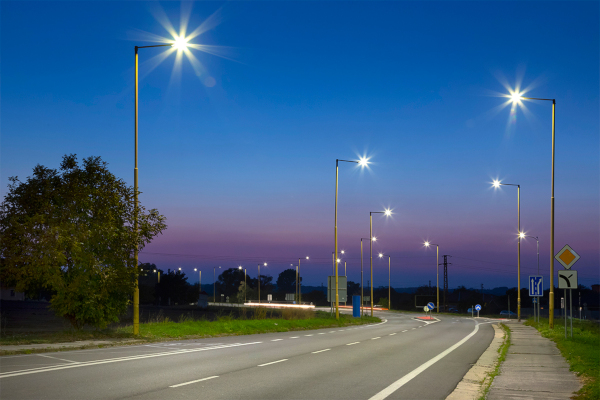Power and new and renewable energy minister Raj Kumar Singh on Friday launched India’s ambitious scheme of offering LED (light-emitting diode) bulbs in rural areas at Rs10 per piece, without any government support or subsidy.
The LED bulbs, which have the lowest price in the world, are offered by state-run Energy Efficiency Services Ltd’s (EESL’s) subsidiary, Convergence Energy Services Ltd (CESL), by leveraging scale. It comes as a boost to India’s Atma Nirbhar Bharat playbook, and will also give India’s climate change strategy a shot in the arm under the Gram UJALA (Unnat Jyoti by Affordable Lighting for All) scheme.
During the first phase of the scheme launched from Arrah in Bihar, 15 million LED bulbs will be distributed across villages of Arrah (Bihar), Varanasi (Uttar Pradesh), Vijaywada (Andhra Pradesh), Nagpur (Maharashtra), and western Gujarat.
Mint earlier reported about the proposed scheme for offering 600 million LED bulbs in rural areas at Rs10 per piece. According to EESL, India is currently the second-largest LED market in the world by value, with the UJALA scheme likely to help avoid peak electricity demand of 9,428 megawatt.
“Gram UJALA programme will be financed entirely through carbon credits and will be the first such programme in India,” said CESL in a statement.
It would work like this. Under the United Nations’ Clean Development Mechanism (CDM), the scheme will claim carbon credits. Also, under the new scheme, the rural consumer’s incandescent and CFL (compact fluorescent lamp) bulbs will be taken back.
“Under the programme, 7-watt and 12-Watt LED bulbs with 3 years’ warranty will be given to rural consumers against submission of working incandescent bulbs. The Gram UJALA programme will be implemented in villages of the 5 districts only and consumers can exchange a maximum of 5 LED bulbs,” the statement said.
The government’s UJALA scheme had cut LED bulb prices to Rs70 apiece from around Rs310 in 2014. Under the new scheme, the revenue earned from carbon credits will contribute Rs60 per LED bulb piece, with the balance Rs10 to be paid by the rural consumer.
“Further on, carbon credit documentation will be sent to UN accredited validators for inclusion into the Shine Program of Activities. Carbon credits will be prepared under the Shine Program of Activities with an option for verifying under the Verified Carbon Standard, depending on the needs of buyers. Carbon Credit Buyers will also be sought through an open process based on initial discussions with the market,” the statement added.
In addition to helping improve energy access in rural areas, the mandatory domestic manufacturing clause in sourcing LED bulb tenders through the scheme will expedite India’s efforts to become an integral part of global supply chains, as firms look to move production lines out of China.
“It is a moment of great pride and joy that we are able to find a solution that will provide affordable and high-quality LEDs to our rural population,” Singh said in the statement and added, “I am sure such commitment and effort will be replicated across rural areas of India.
This comes against the backdrop of India running the world’s largest clean energy programme and seeking a global leadership role in tackling climate change. The new scheme also comes against the backdrop of less than one-fifth, or only 18% of the 360 million LED bulbs distributed under the UJALA scheme, being in rural areas.
“Despite its tremendous impact and reach, the UJALA programme could not touch every village because the rural consumers were not able to pay Rs70 per LED bulb,” said Saurabh Kumar, executive vice-chairman, EESL, in the statement.
India is also running the world’s largest energy efficiency programme, with EESL offering large procurement contracts in the energy sector enabling businesses to leverage scale and achieve economy to bring down prices.
“This is a very important initiative based on an innovative model utilizing carbon credits,” Union power secretary Alok Kumar added.
According to EESL, India offers a compelling reason for investment in combating climate change. In developed economies, while it takes an investment of around $100-$200 for one tonne reduction of greenhouse gases, in India for the same quantum of greenhouse gas reduction, the investment is pegged at $10-$40.
“It is innovative, but risky and yet extremely important as every LED used saves money for people and reduces the need for fossil fuel usage,” added Mahua Acharya, CESL’s chief executive officer and managing director in the statement.
You may also like
-
Trade Connect E-platform For Exports Is Single Window, Fast, Accessible And Transformational: Shri Piyush Goyal
-
Dot Simplifies Approval Processes For Telecom Licenses And Wireless Equipment
-
Coal Production and Supply Trends on Positive Trajectory
-
Union Minister To Release Booklets On Promotion Of Indigenous Species & Conservation Of States Fishes
-
2nd India-Japan Finance Dialogue held in Tokyo on 6th September, 2024
